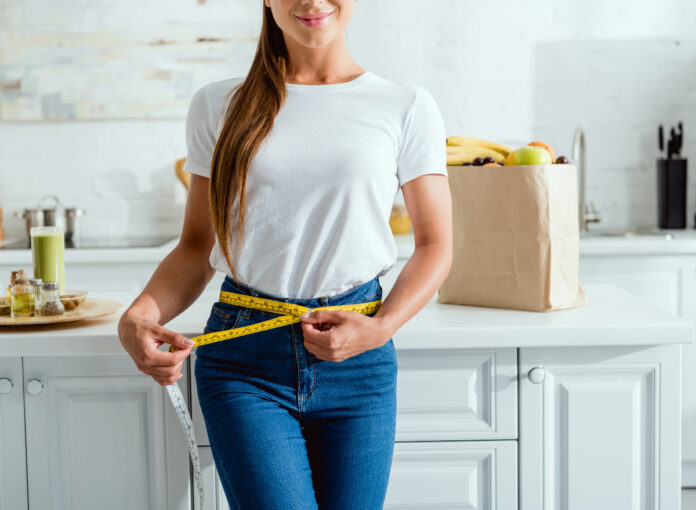Shedding body fat seems to become increasingly more challenging after you hit the big 3-0. Some of the hacks you followed in your 20s don’t seem to work their magic anymore, and, thanks to a changing metabolism, you aren’t able to splurge as much on many of the foods you did in your younger years. As if that wasn’t enough, your work life may leave you inactive for a good part of the day, and your lean muscle begins to naturally decline if you aren’t exercising it. (Oh, the joys of growing up and getting older!) But don’t get too down in the dumps, because there are still many things you can do in order to see the scale move down. Eat This, Not That! spoke with experts who break down their simplest fat loss tips for women over 30.
Keep reading to learn how you can melt unwanted body fat with these simple habits. And when you’re finished, be sure to check out these 10 Best Superfood Snacks to Strip Away Belly Fat
Contrary to what you may think, adding an egg or some beans to your lunchtime salad won’t give you enough protein. As you grow older, your body requires more protein in order to maintain your strength and supply of lean muscle. The greater the amount of muscle you have, the greater the number of calories your body will torch when it’s resting.
“Choosing and eating high-quality protein foods and including them in each meal and snack is one easy way you can lose weight,” explains Roxana Ehsani, MS, RD, CSSD, LDN, board-certified sports dietitian. “It can also help curb your appetite and prevent late-night cravings from creeping up.”
Of course, everyone’s body is different, so it’s always a smart idea to chat with a registered dietitian nutritionist to pinpoint exactly how much protein you should consume daily. But Ehsani typically recommends consuming around 20 to 30 grams of protein for every meal. In addition, work high-protein items like cottage cheese, nuts, seeds, and Green yogurt into your snacks.
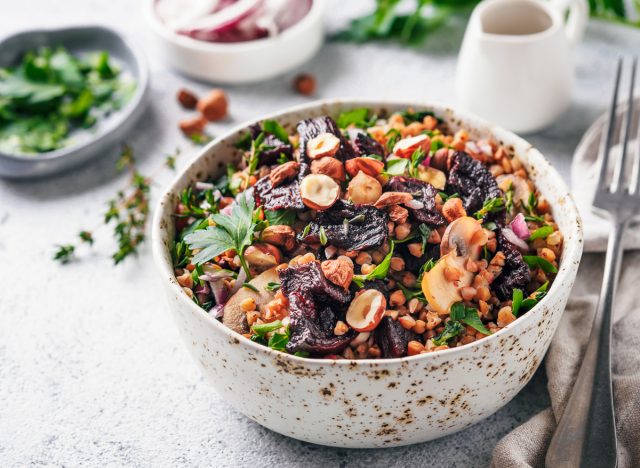
Filling yourself up on fiber is something Lainey Younkin, MS, RD, LDN, weight loss dietitian at Lainey Younkin Nutrition, stresses the importance of.
“Fiber-rich foods like fruits and vegetables are typically lower in calories. For example, one cup of rice or pasta is about 200 calories, but one cup of vegetables is about 30 to 60 calories,” Younkin explains. “In addition, foods high in fiber, especially soluble fiber, move slowly through the digestive tract, keeping you full longer. Fiber also releases hormones like GLP-1 that suppress appetite.” You’ll find soluble fiber in foods like barley and oatmeal, along with veggies and fruits such as Brussels sprouts and apricots.
Younkin recommends consuming eight to 10 grams of fiber in each meal. Keep in mind that a plate of salad won’t help you achieve this goal, considering lettuce only offers one to two grams of fiber. Consider incorporating whole grains like farro or quinoa into a freshly tossed salad to get your fill of fiber and stay fuller for longer. “A good framework to follow for lunch and dinner is to make half your plate vegetables, a quarter of your plate whole grains, and a quarter of your plate protein,” Younkin adds.
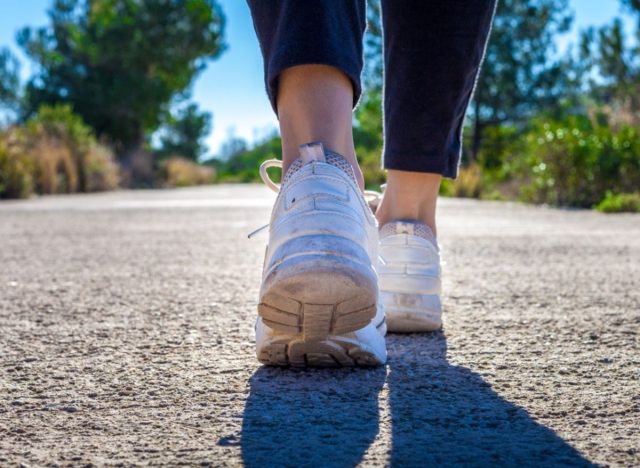
Another important thing to get a healthy dose of each day? Physical activity! Adding more movement to your routine is a surefire way to strip away body fat—and it’s easier than you may think.
“You’ve heard it before—park your car further away, take the stairs instead of the elevator. But these things, along with walking, really do boost fat burn,” Younkin tells us. “That’s because daily movement is categorized as NEAT—non-exercise activity thermogenesis—and NEAT movement burns a larger percentage of calories every day than structured exercise. You don’t have to hit 10,000 steps per day, although it probably wouldn’t hurt. The new sweet spot seems to be around 7,000 to 8,000 steps per day.”

Investing in a set of dumbbells is money well spent. Lifting weights at home is an excellent way to torch fat, sculpt lean muscle, and get into shape.
“Ideally, you want to work up to lifting weights three to four times per week for optimal results, but start small,” Younkin says. “If you aren’t lifting any right now, start with one day per week then build as you get consistent over time.”
Keep in mind that if you aren’t seeing any noticeable changes, you may not be working with weights that are challenging enough. Of course, you don’t want to hurt yourself by lifting more than you’re able to handle, but in order to achieve results, you need to fatigue your muscles. “If it doesn’t feel challenging to do the last three to five repetitions (e.g. bicep curls), it may be time to increase how much you lift,” Younkin suggests.
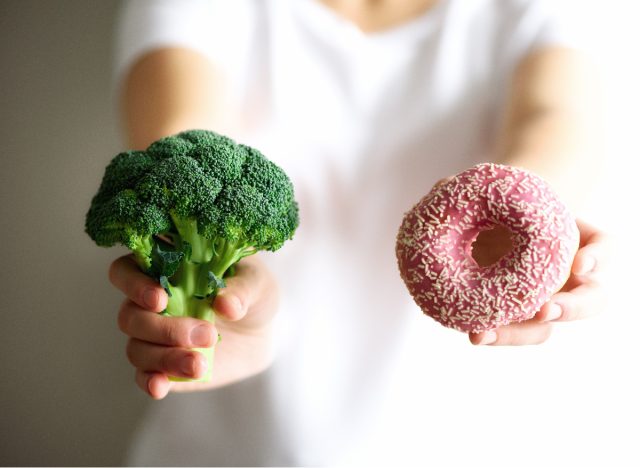
If you’re wondering what the 80/20 rule is, allow Laura Endres, a personal trainer on Fyt, to clue you in. According to Endres, 80% of your consumed calories should be derived from “single-ingredient whole foods.” As an example, this could be a spinach salad that’s topped with a hard-boiled egg, veggies, and a sprinkling of seeds or nuts. Then, the remaining 20% of your consumed calories can be “fun foods.”
“Some people suggest it’s 80/20 of foods, not 80/20 of calories, but fun foods and packaged foods have higher calorie counts, so be mindful of that,” Endres stresses.
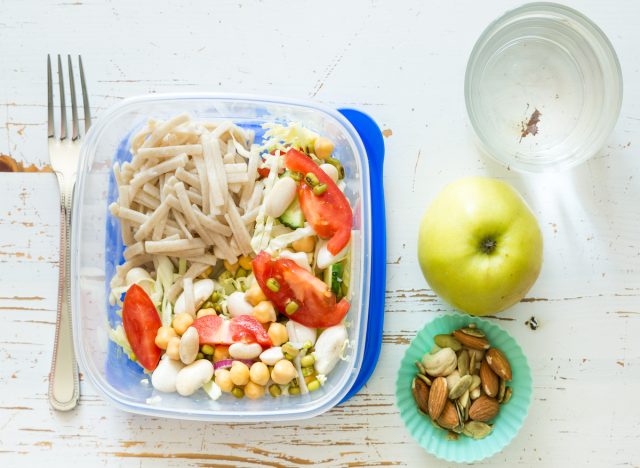
Whether you’re looking to lose weight or stay in shape, portion control is key. Endres emphasizes the importance of practicing portion control, telling us, “Portions in restaurants and packaged foods are out of control. It’s not uncommon for one restaurant meal to contain a day’s worth of calories, not to mention more than a day’s worth of fat. Learn what appropriate portions are and get in the habit of eating that much and then stopping. Bonus: You’ll get two to three meals out of every restaurant meal!”
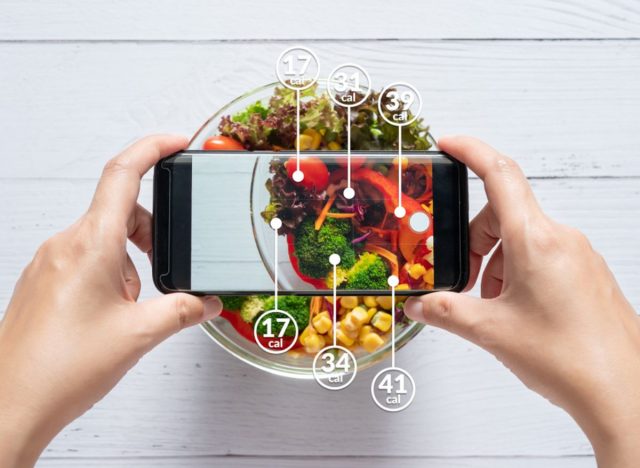
Next up on our list of fat loss tips for women over 30 is to track your calories. Even when you’re eating healthy foods, you’ll never really know how many calories you’re consuming unless you keep track of your intake for a week at a minimum.
“Use a meal-tracking app and input the foods you eat regularly,” Endres suggests. “Track full normal days of eating. See where you are, which foods add more calories than you realized, and adjust accordingly.”
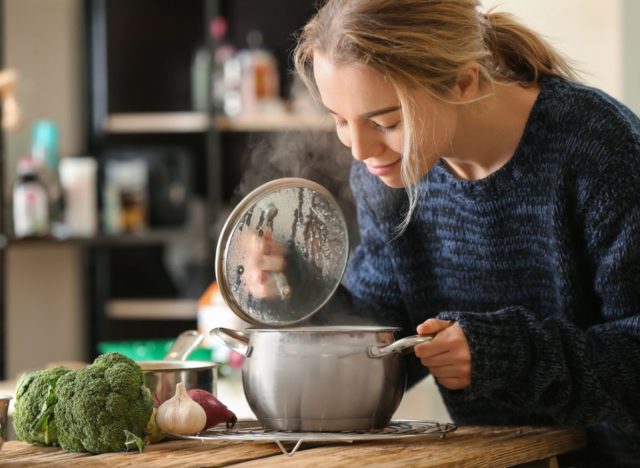
When you’re the one who’s whipping up a homemade meal, you know exactly what’s going into it, from the ingredients to the seasonings and sauces. Make it your mission to try to cook most—if not all—of your meals at home, and meal prep.
“In order to follow these principles, you’ll need to prepare most of your own foods. Rather than coming up with complicated and super-interesting foods, most people choose five to eight meals and make the same things over and over, which makes shopping, meal prepping, and calorie tracking much easier,” Endres says.

When all is said and done, keep things simple. “Find the path of least resistance; otherwise, you’ll never stick with it,” explains Endres. “There are thousands of meal plans and workout plans out there, all claiming to be the best way to achieve your goals, and it’s overwhelming to say the least. Ignore the noise. Choose simple, healthy foods, choose an eating schedule that works for you, guard the time needed for workouts and meal prepping, then repeat, repeat, repeat.”

